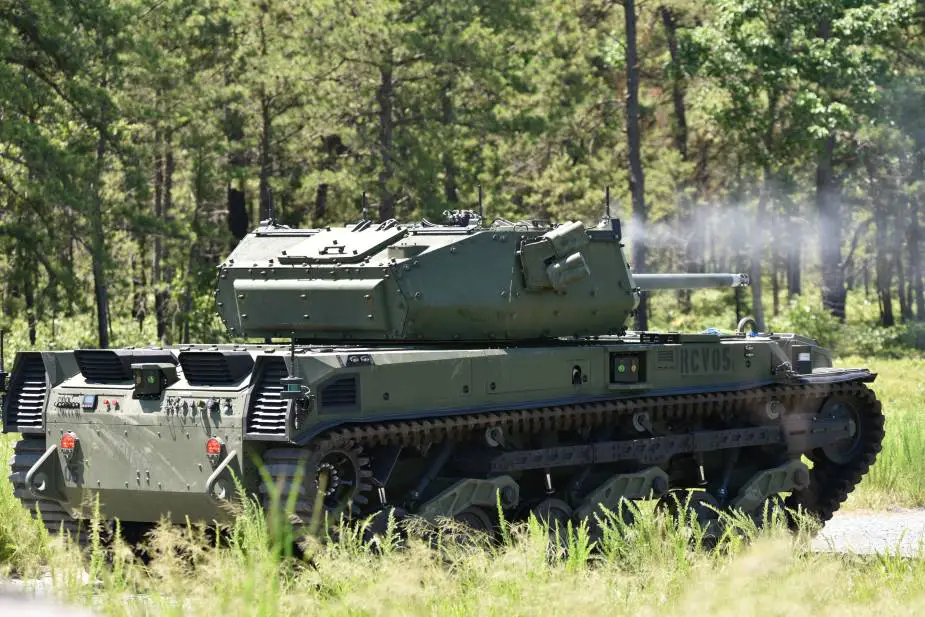As reported by Ford Hood Sentinel on August 4, troopers with the 1st Battalion, 7th Cavalry Regiment “Garryowen”, 1st Armored Brigade Combat Team, 1st Cavalry Division, are working with the Next Generation Combat Vehicle Cross Functional Team members to test different versions of the RCV platforms until late summer 2022.
Follow Army Recognition on Google News at this link

A Robotic Combat Vehicle-Medium fires during the vehicle’s live fire testing at Fort Dix, N.J., June 30, 2021. The testing prepares the vehicle’s systems and the engineers who design and operate it the opportunity to exercise its capabilities before the 2022 Soldier Operational Experiment at Fort Hood, Texas. (Picture source: U.S. Army/Angelique N. Smythe, Picatinny Arsenal Public Affairs)
The testing started in late July with soldiers training on the vehicles, followed by tactical scenarios and situational training exercises. Army engineers and technicians collected the soldiers’ feedback, and will use that to further develop the robotic vehicle’s capabilities with the end-user in mind, Fort Hood Sentinel reports. “Soldier feedback is the foundation for every single requirement we’re writing,” said Maj. Cory Wallace, RCV lead for the Next Generation Combat Vehicles Cross-Functional Team, during a training session, on July 25. Garryowen troopers will have a chance to employ a tethered Unmanned Aerial System, a counter-UAS jammer, modular smoke obscuration module, a Commonly Remote Operated Weapon System (equipped with both crew-served weapons, up to 50-caliber, and a Javelin), as well as an autonomous drive function.
The RCV platforms have non-standard battery-powered systems. The soldiers are namely testing the vehicles’ ability to identify and avoid obstacles and their capacity to fire weapons while on the move. “If you think about it, you know, in any … combat formation, 90 percent of it is a movement moving on unimproved surfaces from point A to point B. We can then off-load that onto a robot and have that robot do that, so the crews can perform more important tasks”, Maj. Cory Wallace said.
Soldiers in the field have further validated the combat benefits of adding robots to a manned-unmanned teamed formation. On-site technicians have collected technical data, and the soldiers have identified new capabilities desired for the operational experiment with the RCVs, Fort Hood Sentinel reports.
The U.S. Army is preparing to make future decisions on the potential acquisition and use of unmanned systems in combat by conducting additional soldier training and evaluation sessions with RCV platforms over the next 36 months.














